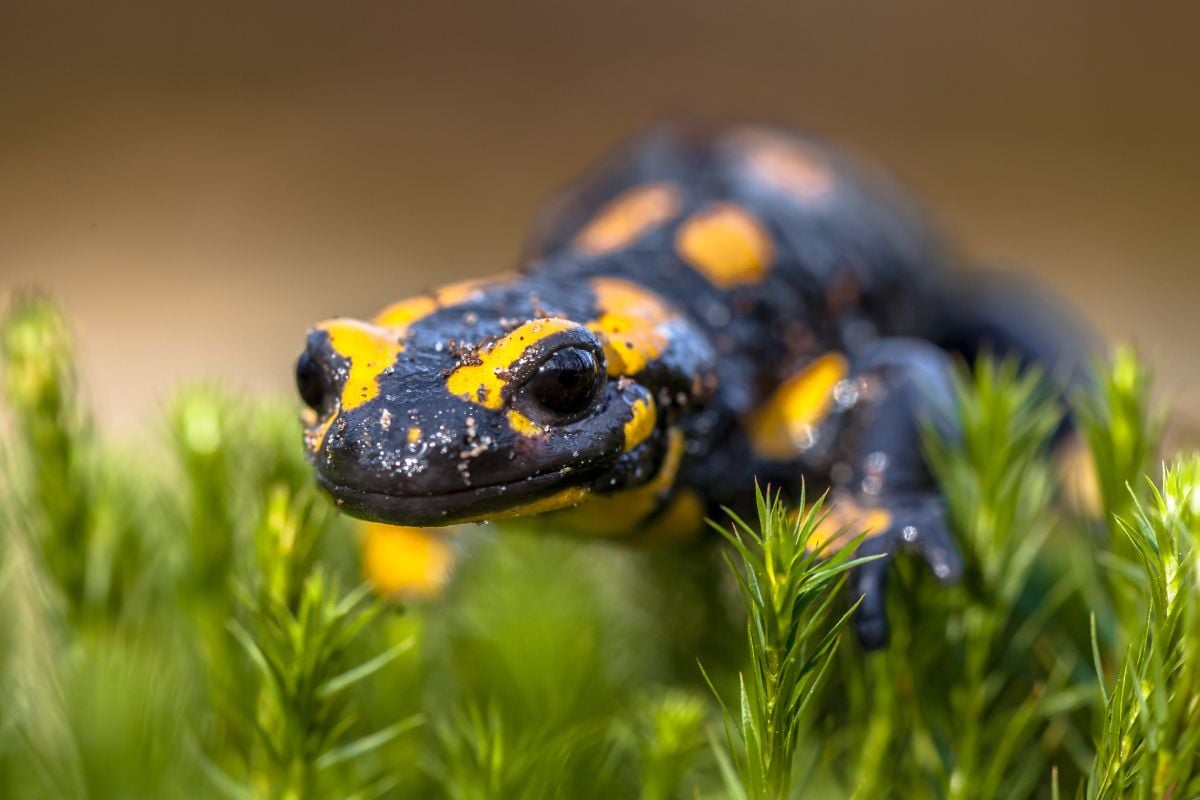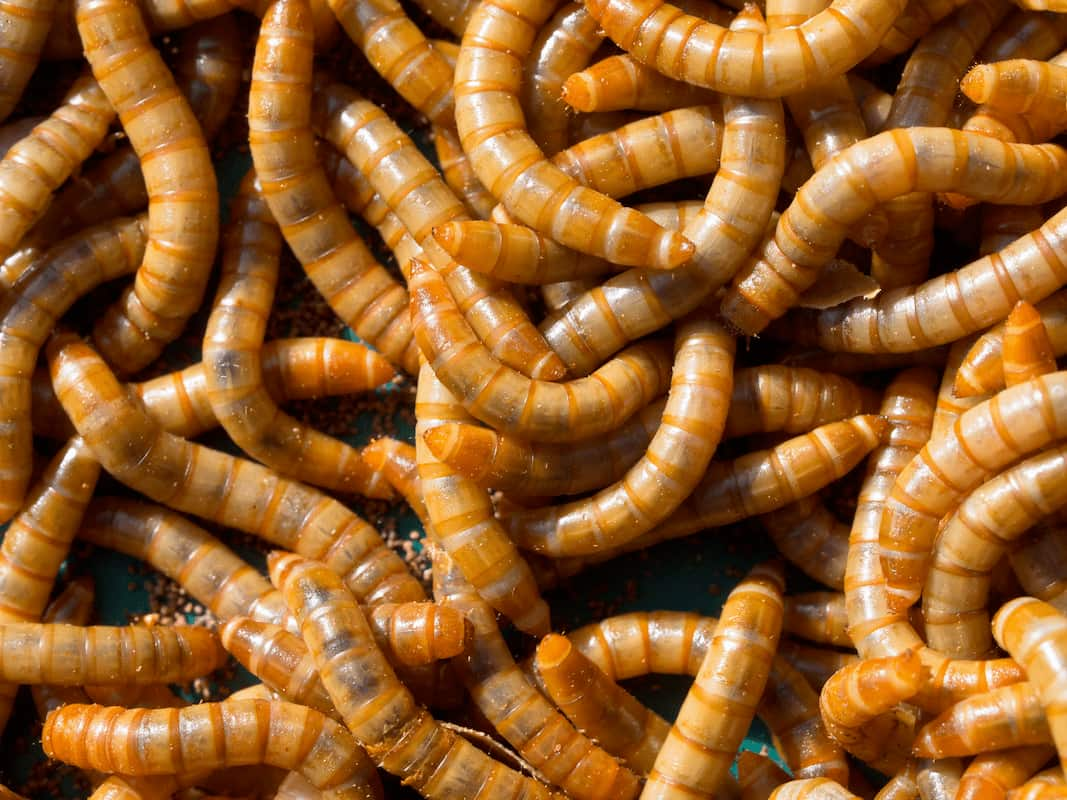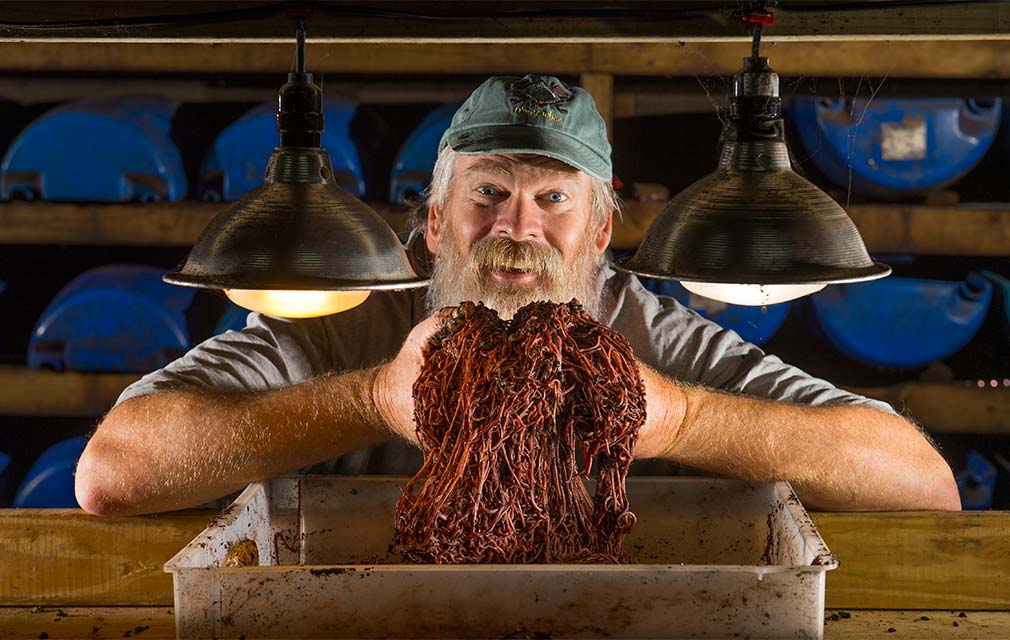
Mealworms, the larval stage of the mealworm beetle, are a fascinating and versatile holometabolic insect. They are known for their ability to adapt to various environmental conditions, making them a popular choice for those seeking an organic food source for animals such as birds, fish, and reptiles.In this article, we’ll explore what mealworms are, their lifecycle, nutritional value, and the various benefits they bring to our animal friends.
Let’s dive into the world of mealworms together!
Types of Mealworms
You’d be surprised to know there’s more than one type of mealworm! As a matter of fact, the two most common types are the yellow mealworms and the giant mealworm.
Yellow mealworms (Tenebrio molitor), which are known for their medium size and golden color are a popular choice as feed for poultry and reptiles due to their high protein content.
The Giant mealworm (Zophobas morio), which lives up to its name with its larger size and dark brown color is ideal for feeding larger reptiles and fish, as they provide a substantial amount of nutrition. Their larger size also means that they can be easily handled and used as bait for fishing.
Both the Yellow mealworm and the Giant mealworm offer numerous advantages when it comes to providing a nutritious food source for animals. Their high protein content ensures that pets and livestock receive the essential nutrients they need for optimal growth and health. Additionally, mealworms are a natural and organic choice, free from any harmful chemicals or additives.
The yellow mealworms are actually the larval stage of the mealworm beetle, a type of holometabolic insect. Holometabolic insects are those that go through
a complete metamorphosis, from egg, to larva, to pupa, and finally, to adult.
Understanding the different types of mealworms helps provide a clearer picture of these fascinating creatures. With this knowledge, we can now delve deeper into the fascinating journey of the mealworm lifecycle in the next section.
Mealworm Lifecycle
They’ll start as eggs, then transition into larvae, pupae, and finally adult beetles in their lifecycle. This is the fascinating journey of a mealworm. I’ve seen these stages unfold firsthand, and it’s truly an awe-inspiring process.
The egg stage is the first of the mealworm’s lifecycle. The female beetle lays hundreds of tiny, white, oval-shaped eggs, which are almost invisible to the naked eye. They’re usually hidden in dark, damp places like under decaying leaves or logs.
The larva stage follows, where the mealworms grow and molt numerous times. This is the stage where they’re often mistaken for worms due to their long, yellow-brownish, segmented bodies, yet they’re beetles. This stage lasts up to ten weeks and they’ll eat just about anything organic.
Then, they become pupae. They’ll stop eating, their bodies will harden and darken, and they’ll stay immobile. This stage often lasts two to three weeks.
Benefits of Mealworms
Mealworms, those small but mighty creatures, offer many benefits that make them a fascinating addition to any worm-farming endeavor.
Firstly, their larval form serves as an exceptional food source for various animals, making them particularly popular among bird owners, fish enthusiasts, and reptile keepers. High in protein, vitamins, and minerals, these wriggling larvae provide a nutritious feast for insectivorous birds, ensuring their health and vitality.
Further, with their remarkable transformation from larvae to beetles, mealworms have the unique ability to self-propagate, facilitating uninterrupted mealworm production.
Finally, mealworms play a crucial role in the recycling of organic waste, as they efficiently consume and decompose food scraps and agricultural by-products. This eco-friendly approach not only reduces waste but also creates a sustainable solution for organic farming.
The benefits of mealworms extend far beyond their small stature, making them an invaluable asset to the world of worm farming and animal nutrition.
Nutritional Value of Mealworms
Mealworms may seem like tiny creatures, but they pack a powerful nutritional punch. As an experienced worm farmer, I can confidently say that  these little larvae are a nutritional powerhouse. They are rich in protein and fat, making them an excellent addition to any diet.
these little larvae are a nutritional powerhouse. They are rich in protein and fat, making them an excellent addition to any diet.
They contain a whopping 20-30% protein content, which is even higher than that found in meat or fish. Additionally, mealworms are an abundant source of essential amino acids and unsaturated fat.
Including mealworms in your pet’s or animal’s diet can be beneficial in many ways. Their high protein content makes them an ideal snack for a range of pets, from birds to fish. They are a cost-effective and sustainable alternative to traditional food, and their nutritional value ensures that your pet receives a well-rounded diet.
In conclusion, mealworms are more than just squirming insects. They are a treasure trove of nutrients, offering high protein and fat content, vitamins, and minerals. So, whether you’re a bird owner or fish or reptile enthusiast, consider adding mealworms to the menu for a nutritionally rich and sustainable snack.
Caring for Mealworms
Let’s delve deeper into the world of mealworm care, a topic I’ve come to know well through years of personal experience.
From sourcing high-quality worms, and choosing the right containers for their storage and growth, to creating an ideal environment that encourages their development, I’ll provide practical insights to help you navigate these crucial steps.
We’ll also discuss how to feed your worms a diet that promotes their health, and the importance of maintaining cleanliness to prevent disease and infestation, all in an effort to ensure your mealworms thrive.
Finding and Buying Quality Mealworms
When you’re in the market for mealworms, it’s crucial to find a reputable supplier to ensure quality and health. Mealworms should be plump, wriggly, and a healthy yellow color. Watch out for any signs of discoloration or sluggishness, these are clear indicators of unhealthy stock.
At Uncle Jim’s Worm Farm, we take pride in the worms we grow, and ensure all worms we deliver arrive to you live and well.
Appropriate Containers for Storing and Raising Mealworms
You’ll need to consider the right type of container for raising and storing your mealworms, as this can significantly impact their health and growth.
I’ve found that these critters thrive in shallow, smooth-sided containers, like plastic or glass. Metal containers aren’t a good choice because they can rust and harm your mealworms. The container should be wide enough to allow the mealworms to move freely, but not too deep—about 3-4 inches of depth is ideal.
From personal experience, I’ve seen how crucial proper ventilation is. Drill some small holes in the container’s lid for airflow. Just remember to keep the holes small enough to prevent escape.
Lastly, keep your mealworms in a dark, room-temperature place—they don’t like light, and extreme temperatures can kill them.
Providing an Environment that Promotes Proper Growth and Development of the Worms
It’s essential that you provide a conducive environment to promote proper growth and development for your tiny friends. Believe me, mealworms are a bit finicky about their surroundings.
Humidity is an important element in this sense. The ideal humidity range for mealworms is around 50-70%. Moisture is essential for their well-being, as it helps with shedding their skins and preventing dehydration. However, excessive moisture can lead to mold or bacterial growth, so finding the right balance is crucial.
The substrate, or bedding, is where mealworms live and feed. It should be organic and provide a good source of nutrients. Popular options include oats, wheat bran, or a combination of the two. The substrate should be kept loose and free from compacting, as it allows the mealworms to burrow and move freely.
Feeding Your Worms the Right Diet to Support Their Growth and Health
Feeding your tiny friends the right diet is crucial for their growth and health. I’ve discovered that mealworms love a balanced diet of grains, like oats or wheat bran, and fresh fruits and veggies for moisture. Apples, carrots, and potatoes are favorites in my experience. But don’t overdo it, as too much moisture can lead to mold growth.
It’s best to feed them small amounts regularly.
Constant care and attention to their diet is the key to raising robust mealworms.
Keeping Your Worms Clean to Prevent Disease and Infestation
Keeping your mealworms clean is absolutely essential to prevent disease and infestation. I’ve raised mealworms for years and know that cleanliness is paramount. I always make sure to remove any uneaten food and dead worms promptly. Dead worms can create a breeding ground for bacteria if left unchecked.
Additionally, I often sift through the bedding to remove waste and ensure it’s dry. Any dampness can lead to mold growth, which is harmful to the worms.
You should also sterilize the container periodically, using a solution of warm water and vinegar, making sure to dry it thoroughly before adding fresh bedding. These simple steps greatly reduce the chance of disease or infestation.
Conclusion: Mealworms are Amazing
In wrapping up, I’ve found mealworms to be truly fascinating creatures with a unique lifecycle. They have undeniable benefits, even if it requires some effort to properly care for them.
All in all, understanding and managing mealworms can be a rewarding experience if you’re willing to put in the time and effort.










3 thoughts on “What Are Mealworms: Everything you Wanted to Know”
I recently purchased meal worms, they seemed to be doing well, I kept some moist paper in the container, I’d open it to increase air flow, gave about 2 to 2.5 in of wheat bran, some potato and a bit of cantaloupe. This morning they seemed to be moving around but now none are moving and I don’t know if I killed them? Some help would be appreciated
Hello;
I am not sure what you did that could have killed them? Adding Moist paper would not do it though we do recommend that you put them in dry ground oatmeal in a flat container and feed them carrot, potato or apple slices at room temperature once a week.
Uncle Jim’s Worm Farm
If you are storing them in the fridge, do they still need the ‘meal’ bedding or is that just when you are gut loading, or feeding them the fruit etc. once per week??